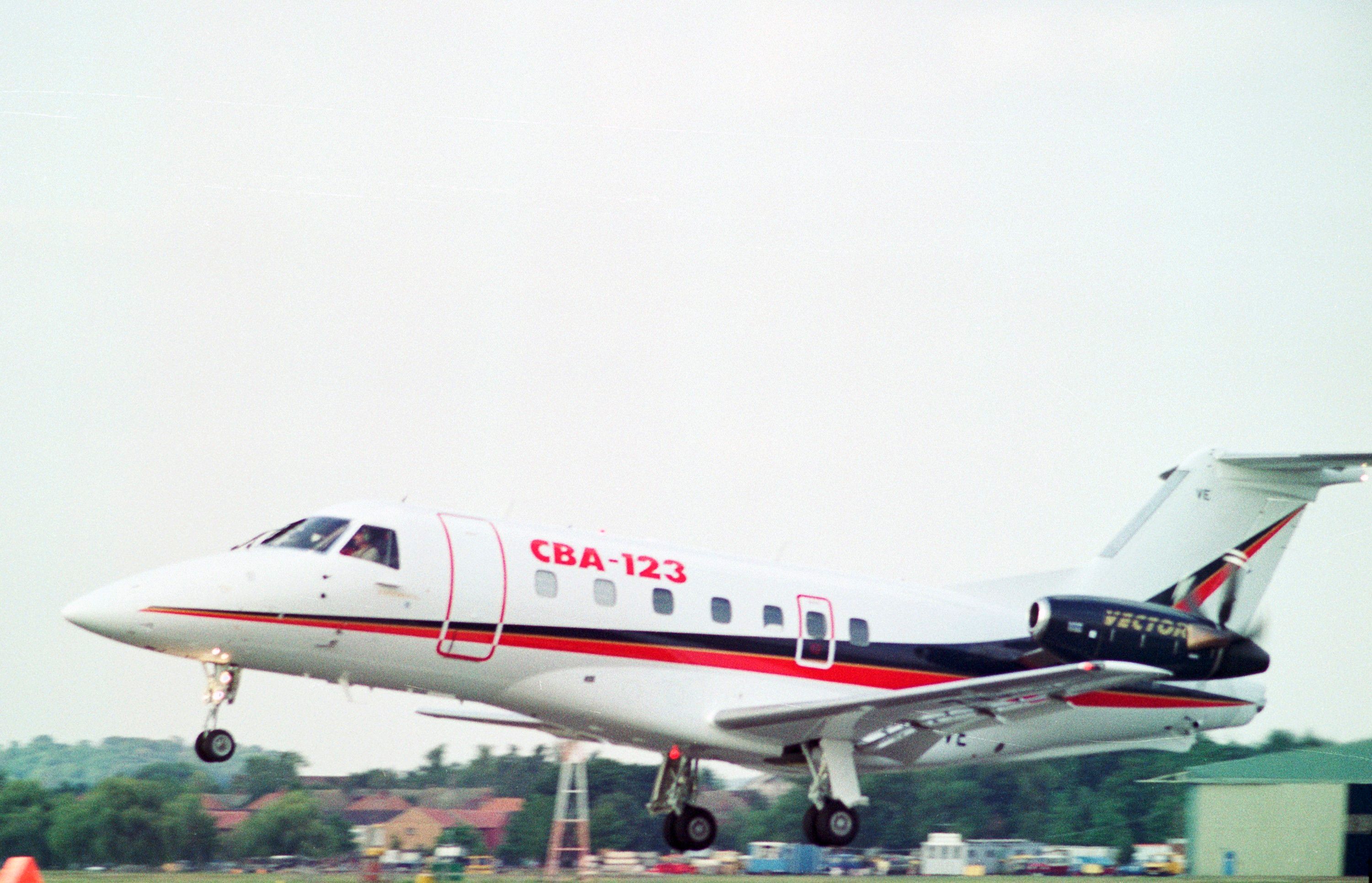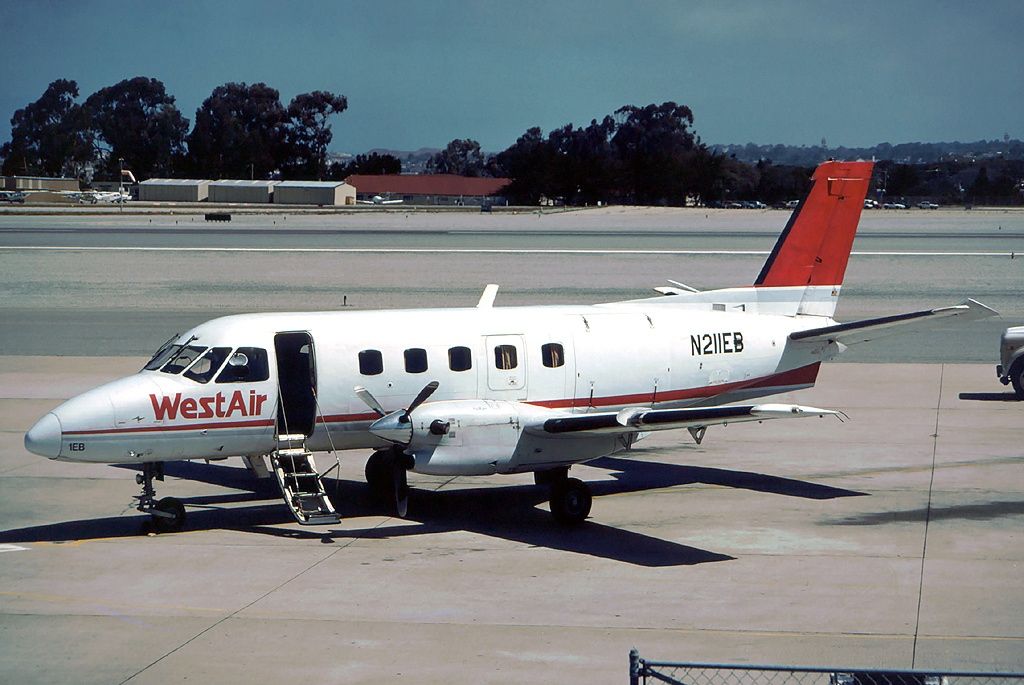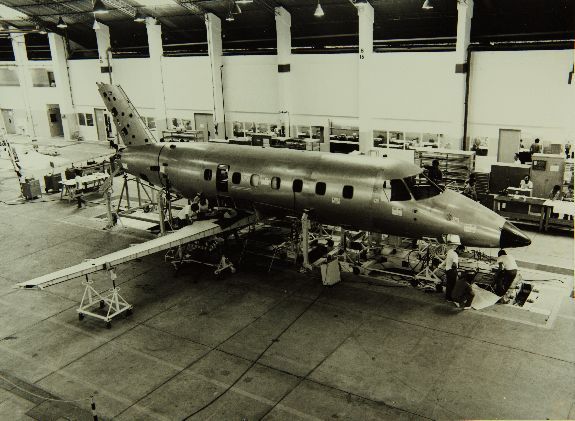Could a partnership between two neighboring counties lead to the development of new aeronautical technology? Absolutely. In fact, several well-known collaborations may come to mind, such as the Airbus consortium of partner countries. However, many readers may not be aware of a cooperative between Brazil and Argentina that led to the Embraer/FMA CBA 123 Vector.
Out with the old, in the with new (and unique)
In the 1980s, Embraer was active in producing small to medium-sized turboprops focused on the regional market. The EMB 110 Bandeirante was a popular model for small feeder routes, particularly in smaller density destinations. By 1985, Embraer had started to produce the 110’s larger sibling, the 30-seat EMB 120 Brasilia. Eventually, the larger model was clinching many sales and the Brazilian manufacturer realized it was time to replace the Bandeirante with a more advanced offering for the ever-demanding regional market.
A neighborly collaboration
Brazil looked to its next-door neighbor, Argentina, for the purpose of fostering a working relationship between the two countries. So, a partnership was formed between Embraer and an Argentine company called Fabrica Militar de Aviones (FMA). The deal focused on the development of a revolutionary new turboprop design initially named the EMB 123 but later renamed the Embraer/FMA CBA 123 Vector. The longer nomenclature included the initials CBA which had a bilingual translation for 'Brazil-Argentina Cooperation:’ "Cooperación Brasil-Argentina" (Spanish), and "Cooperação Brasil-Argentina" (Portuguese).
The airframe work was divided between the countries with Embraer taking on 67% of the workload and costs while the remaining 33% was allotted to FMA. The Argentines were to initially build the wings, fins, and rudders with Embraer producing the remaining structures. However, FMA’s role was later changed to the central fuselage, rear fuselage, and horizontal stabilizers. The original plan for the fuselage was to use a stretched version of Embraer's EMB 121 Xingu, but the partners opted for a shorter version of the Brasilia.
A new twist on turboprop design-thinking
The Vector offered some interesting changes to the traditional way regional turboprops had been designed up to that point. In lieu of forward-facing propellers, the aircraft featured twin rearward-facing counter-rotating 'pusher' props. Designers aimed to reduce cabin noise and vibration levels, which was later validated during ground and flight testing. With a reported cabin noise range of 74-76 decibels, the cooperative claimed the aircraft was noticeably quieter than a Boeing 737-300.
The engine of choice was the Garrett TPF351-20, an evolution from the TPE331-12B initially used on test flights using Brasilia testbed. Having engines located aft not only provided lower cabin noise levels, but also gave engineers the chance to design a smaller wing designed for higher cruise speeds. The Vector’s fastest cruise speed was about 350–360 knots at an altitude of 25,000 ft with its most economical cruise altitude between 30,000–35,000 ft.
For its time, the aircraft featured an eye-catching digital avionics package, which included an electronic flight instrument system (EFIS), attitude and heading reference system (AHRS), engine indication and crew alerting system (EICAS), and full authority digital engine control (FADEC).
The Vector takes flight
The Vector’s first flight was originally planned for 1988, with deliveries commencing in 1990. After some production delays, the Embraer/FMA CBA 123 had its inaugural flight on July 18th, 1990, followed by its official presentation on July 30th. In September of that year, the prototype made its debut at the Farnborough Air Show.
Embraer expected aircraft production to start in May 1993 while the second Vector prototype made its initial flight in March 1991 and flew at the Paris Air Show in June. By that time, the new South American turboprop had about 130 soft orders, but price and production delays began to seep in.
Financial headwinds slow progress
The South American cooperative had originally planned for the Embraer/FMA CBA 123 Vector to sell at USD$3 million, however as time went on (and manufacturing costs increased), the price structure ascended as well. By the fourth quarter of 1990, the aircraft had reached an estimated price of about USD$5 million, making it approximately USD$1 million more expensive than competing 19-seat turboprops.
To effectively compete in the 19-seat market, Embraer and FMA opted to make some equipment items optional. Nevertheless, the advanced avionics package and unique pusher-prop design still came at a high cost. By November 1990, Embraer began its cost-cutting measures including the elimination of nearly 30% (4,000 jobs) from its workforce. The Argentine-Brazilian cooperative also announced a one-year delay in CBA 123 program development.
Adding insult to injury, the Brazilian government chose not to offer new investment capital due to a growing political crisis surrounding the presidency. This lack of funding caused some suppliers to ask for advanced payments which forced the Vector’s price to rise even further. The aircraft was no longer able to effectively compete in the market, and as a result, the Embraer/FMA CBA 123 Vector was canceled, with only two prototypes built and a third 80% completed.
Remembering the Vector
While the Embraer/FMA CBA 123 Vector was grounded, its memory lives in thanks to Embraer’s efforts to promote the unique design work performed with the Vector. As part of its 40th-anniversary celebration, the Brazilian manufacturer restored all three prototypes for public display. Prototype #1 stands guard outside the Memorial Aeroespacial Brasileiro (Brazilian Aerospace Memorial) in São José dos Campos.
The second prototype is placed in the main exhibition hall at the Museu Aeroespacial (Aerospace Museum) in Rio de Janeiro. To emphasize the spirit of bilateral collaboration, the uncompleted FMA-built third prototype is now housed at the National University of Córdoba in Córdoba, Argentina. So, while the Vector will never fly again, its innovative design lives on.


.jpg)


_(PT-ZVE)_-_2.jpg)
_(PT-ZVE)-(1).jpg)
.jpg)